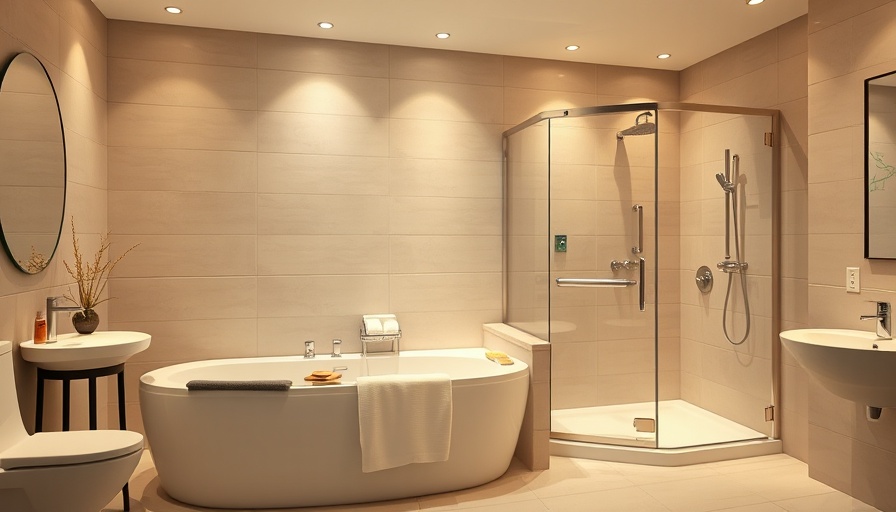
The Importance of Accessibility in Aging
As our loved ones age, ensuring a safe and accessible living environment becomes imperative. For homeowners in Ocean County, this often leads to the critical decision of selecting between a walk-in tub or a roll-in shower. Both options provide significant accessibility benefits, but understanding their individual features can help you identify which aligns best with the specific needs of the user.
Exploring Walk-in Tubs: A Therapeutic Experience
Walk-in tubs are tailored for ease of entry, featuring low thresholds and watertight doors that offer a seamless transition into bathing. These tubs often come with essential safety features like grab bars, anti-slip surfaces, and built-in seating, making them ideal for individuals with limited mobility. The therapeutic aspect of soaking in a warm bath is another key benefit. Hydrotherapy in a walk-in tub can help alleviate symptoms of arthritis or muscle pain—providing a comforting experience that’s hard to replicate with a standard shower.
Customizable Roll-in Showers: Convenience Meets Functionality
On the other hand, roll-in showers provide a versatile and spacious alternative for those who utilize wheelchairs or have balance issues. Their flat thresholds encourage independence and safety, while the customizable aspects—like shower benches—can enhance user experience and comfort. Many homeowners find that the stylish options available for roll-in showers allow them to marry functionality with aesthetics without compromising on accessibility.
Weighing Your Options: Walk-in Tubs vs. Roll-in Showers
When making a choice between these two options, consider the individual needs of the user. If soaking is a priority for therapy or relaxation, a walk-in tub may serve that purpose well. However, for users who prefer a shower experience, perhaps due to mobility needs or personal preference, a roll-in shower may be the better fit. Space considerations are also paramount; walk-in tubs typically require more room than roll-in showers, making the latter a practical solution for compact bathrooms. Not to mention, a roll-in shower can significantly enhance accessibility for caregivers and family members, often eliminating difficult maneuvering within confined spaces.
Cost Considerations: Budgeting for Accessibility
Cost can play a significant role in your decision-making process. Generally, walk-in tubs are more expensive to install than roll-in showers, though prices can vary based on various features and renovation complexities. Therefore, thorough research and budgeting are essential before settling on a choice. Avoid overlooking long-term considerations, such as maintenance and potential replacements, which can impact total costs.
Emotional Benefits of a Safe Home Environment
Choosing the right bathing solution can have significant emotional implications. For many homeowners, ensuring their loved ones can maintain their independence is priceless. The right installation can help preserve dignity while providing the necessary support for daily activities. Being proactive in home modifications can lead to a more empowered lifestyle for elderly individuals and those with disabilities, promoting greater self-sufficiency.
Conclusion: Your Path to Improved Home Accessibility
Understanding these two options—walk-in tubs and roll-in showers—can assist in making a well-informed decision that enhances both safety and quality of life for your loved ones. By evaluating health needs, spatial constraints, and budget, you can select the right solution tailored to your situation. Empower yourself with the knowledge on these options and take the first steps toward improving your home's accessibility.
 Add Row
Add Row  Add
Add 




 Add Row
Add Row  Add
Add 

Write A Comment